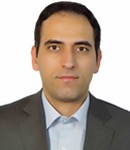

Plenary Lecture
Sustainability Lessons Learnt from Traditional Buildings

Professor Ahadollah Azami
Department of Architecture
Faculty of Architecture
Eastern Mediterranean University
Famagusta, North Cyprus
E-mail: ahadollah.azami@emu.edu.tr
Abstract: Logic lies in the experience. Efficient and rational usage of the climate in shaping of the living spaces as a basic building - environmental subject is observable in the most of our ancestors’ fundamental methods and principles. Sustainable architecture of traditional buildings with their innovative construction of that time and low impact on the environment, has presented the best performance in terms of energy sustainability. According to this fact that use of pattern is one of the characteristics of the sustainable traditional architecture; consideration and investigation in environmental architecture of sustainable traditional buildings and using intelligent passive methods and experiences can be sustainable guides for contemporary constructions without imposing additional cost by optimization of energy consumption, But learning of the traditional architecture does not mean imitation of the past forms while the logic of traditional forms should be learnt and valuable experiences of the intelligent passive methods in buildings and cities should be investigated.
Architects, engineers and building science researchers are interested in investigation of sustainable traditional buildings and lessons learnt for new contemporary constructions, so sustainability items of traditional buildings can be considered as effective factors to achieve sustainability goals. This session examines the effects of the climatic, socio-cultural and economic factors on shaping of architecture and construction of sustainable traditional cities and identification of their strategies, meanwhile tries to consider sustainability, human thermal comfort criteria, climatic building requirements and new construction guidelines according to vernacular architecture findings and the latest achievement in climatic architecture based on natural energies without needing to mechanical systems. So this session deals with spatial characteristics of building form and construction by strong cultural background that has worked in a long time in specific climatic conditions.
The aim of this invited session is to provide a forum for the presentation of papers on lesson learnt from sustainable traditional buildings for contemporary construction. Papers are invited on the following topics, or other related themes:
- Energy sustainability
- Sustainable materials in traditional buildings
- Low energy architecture
- Innovation in sustainable buildings
- Sustainable education in architecture and urban design
- Sustainable calendar buildings
- Passive heating, cooling and ventilation methods
- Cultural aspects in Sustainable architecture
- Sustainable water use in architecture and urban design
- Restoration and rehabilitation of sustainable buildings
Brief Biography of the Speaker: Dr. Ahadollah Azami was born in Marand, Iran in 1977. He is head of Iranian Domestic Technologies Society in the north west of Iran. Meanwhile he is coordinator of Swedish Ecological Centre (EKOCENTRUM) in the north west of Iran and also member of International Solar Energy Society (ISES), ASES, IRSES, ASCE, and ASME and WSSET.
He developed the original of old and ancient sustainable architectural methods to contemporary functions especially in the field of Sustainable solar architecture, urban design and zero energy buildings. His researches are focused on various topics such as culture, education, water, solar buildings; technical restoration and renovation of historical buildings and sites approaching sustainability and development. He has one invention in solar architecture and has awarded some national and international prizes around the world. He has delivered keynotes speeches at national and international conferences on renewable energies and published as an author or co-author over 55 scientific papers in reviewed journals or presented at international conferences. He participated actively with contribution of 8 papers in three WSEAS conferences and was member of International program committee in the 3rd WSEAS International Conference on Cultural Heritage and Tourism (CUHT ’10), Greece. Finally he is reviewer of an ISI Journal and also reviewer and member of scientific committee of 9 WSEAS international conferences around the world.